As a child, my first museum visits were orchestrated by my parents. These all-day excursions began the moment the museum opened its doors and ended sometime after five o’clock, when a security guard shuffled us to the nearest exit. Before the day was through, we’d make it a point to see everyone’s favorite area of the museum, eventually charting its every offering.
Today trips like this are harder and harder to come by and actually, now that I work for the Dallas Museum of Art, one of the hardest parts of my job is finding the time to experience the artwork! For me, shorter more frequent trips to the Museum have helped me get to know the DMA one gallery or even one artwork at a time.
Thanks largely to the DMA’s great variety of lunchtime tours, after-hours programs, and lectures, you can broaden your knowledge of the collection nearly every week. These guided experiences are the perfect way to spend a short visit to the DMA, and hopefully they’ll encourage and equip you to do more focused exploring on your own!
With just sixty minutes to work with, you’d be surprised at the great multitude of experiences that await you. Here are some of my favorite works to get you started. They’re just a small sampling of the amazing works that will inspire you to take your time and get a closer look.
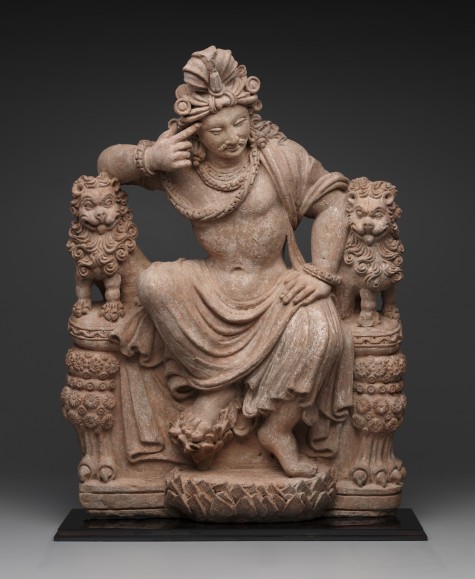
Gandharan culture, Hadda region, "Thinking Bodhisattva", 4th to 6th century A.D., Terracotta, Dallas Museum of Art, Wendover Fund, gift of David T. Owsley via the Alvin and Lucy Owsley Foundation, Cecil and Ida Green Acquisition Fund, and General Acquisitions Fund
This Buddhist sculpture, located on Level 3, represents a bodhisattva, or someone who has achieved enlightenment but delays Nirvana to help others achieve transcendence. In fact, he’s not just any bodhisattva, but the one destined to become the historic Buddha, the founder of Buddhism.
I enjoy this sculpture mostly because of its rich detail and lively gestures. When I stand before him, he seems to be not only reflecting upon his impending destiny but truly at the heels of it. At any moment he seems ready to step off his throne and into his next life as the Buddha.
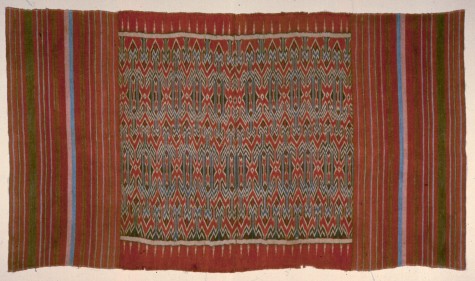
Toraja, Sulawesi, Galumpang area, Indonesia, Shroud or ceremonial hanging (sekomandi), probably late 19th century, Cotton, Dallas Museum of Art, the Steven G. Alpert Collection of Indonesian Textiles, gift of the McDermott Foundation
Of all media, I am least familiar with and most intrigued by the textiles. You can get fairly close to these objects in the galleries, and attempting to deconstruct their striking complexities by doing so can be nothing short of mesmerizing.
This example, located on Level 3, was woven by the Toraja peoples of Indonesia and exquisitely combines bold arrangements in color, pattern, and texture to reveal in its central quadrant a series of geometric and interlocking human figures believed to represent generations of beloved ancestors.
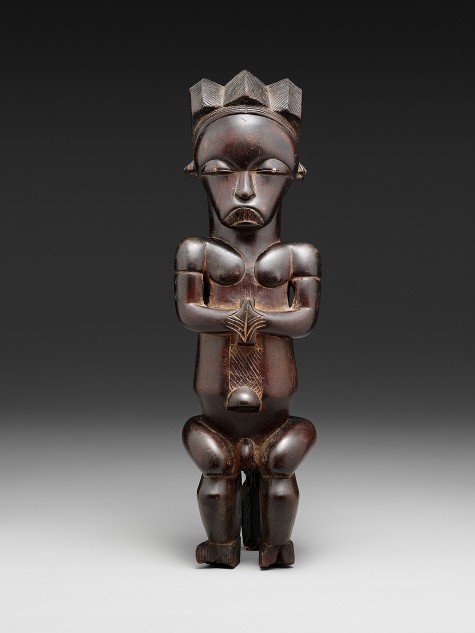
Mvaï group, Fang peoples, Ntem region, Gabon, Africa, Reliquary guardian figure, 1800-1860, wood, Dallas Museum of Art, The Eugene and Margaret McDermott Art Fund, Inc.
Predating Western notions of cubism by nearly half a century, this rare sculpture from the Fang peoples of sub-Saharan Africa is sure to stun you in your tracks. Composed of beautifully carved abstract and voluminous forms, the shining figure was probably modeled in the likeness of an ancestor and positioned protectively atop a reliquary box containing familial remains. Now I like to think of him as standing guard over the African galleries on Level 3 at the DMA, humbling our viewers and summoning their attention.
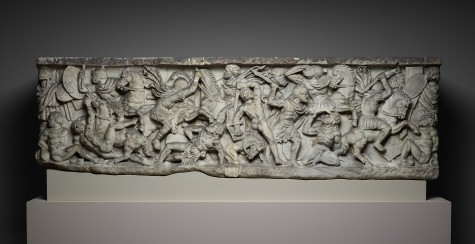
Roman, Battle sarcophagus, c. 190 A.D., marble, Dallas Museum of Art, Cecil and Ida Green Acquisition Fund and gift of anonymous donor
This sarcophagus, located on Level 2, was probably made to commemorate the military victories of a Roman general whose corpse it was intended to house. Its battle scene is deeply carved in a complex relief that reveals warriors, horses, and captives, each densely intertwined and submerged in the real chaos of war.
Every time I visit this work, I’m fascinated by the great number of unique figures and gestures captured against its surface. Every few inches reveals a new layer of intense drama.
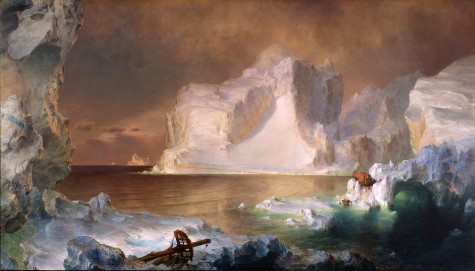
Frederic Edwin Church, The Icebergs, 1861, oil on canvas, Dallas Museum of Art, gift of Norma and Lamar Hunt
During my first visit to the DMA, The Icebergs, located on Level 4, was the first masterpiece to truly floor me. Based on sketches made during a monthlong boat trip in the North Atlantic, it is an enthralling triumph by Frederic Edwin Church.
Its exquisite palette and sharp glow entice any viewer. I have to visit the painting time and time again, simply because each time I do, I swear, it changes. No matter how hard I try, I can never fully recall its subtle warmth and reflection of light.
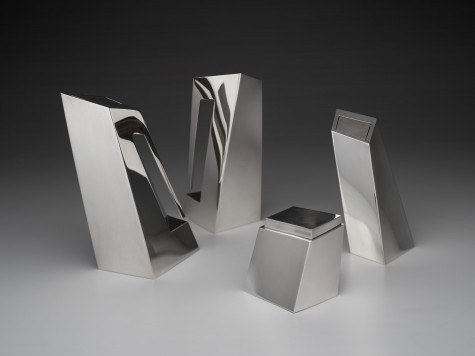
Zaha Hadid (British born Iraq, 1950), designer; Sawaya & Moroni (Italian, est. 1984), maker, Tea and coffee service, designed 1996, executed 2002, silver, Dallas Museum of Art, anonymous gift of in honor of Lela Rose and Catherine Rose
This puzzle-like tea and coffee service, located on Level 4, represents a first foray into silverware for renowned architect Zaha Hadid. When not in use, the lustrous components gather into a single architectural form that defies symmetry and cleverly disguises its function.
How cool is that?! I challenge you to stand in front of this service and try to piece it together in your head. It’s no easy feat, I assure you, but in the meantime you’ll definitely enjoy getting lost in its abundance of reflective surfaces and voids.
Auriel Garza is the Curatorial Administrative Assistant to Non-Western and Decorative Arts at the DMA.